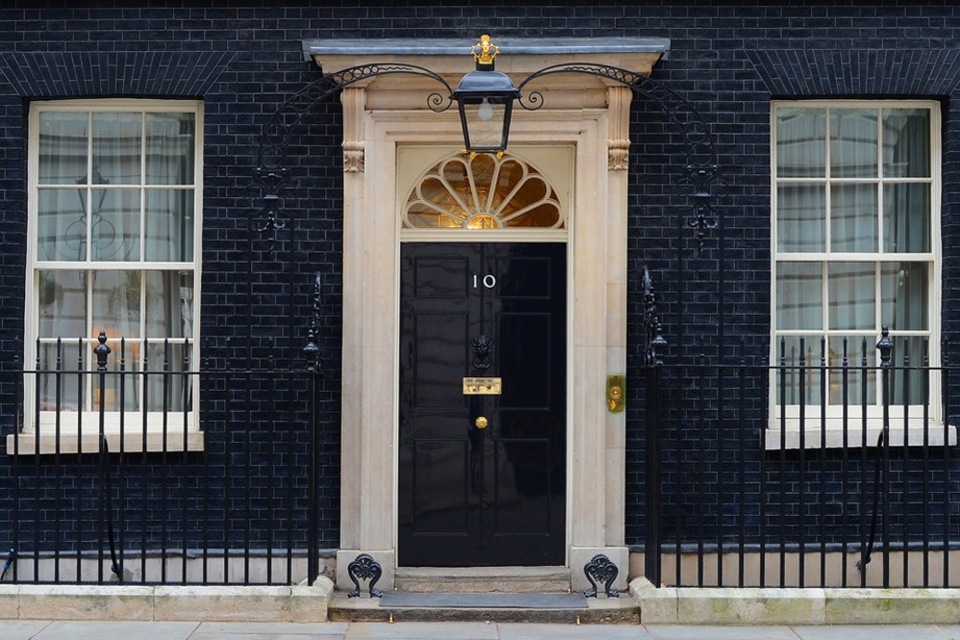When you’re self-employed, it can be more challenging to develop the proper savings habit to grow your pension for the retirement you’ve been working hard for.
You don’t have the benefits of someone picking your pension plan for you, and you completely miss out on pension contributions from your employer. You don’t have the benefits of auto-enrolment, and on top of that, you have to navigate irregular income patterns to ensure you’re saving enough for the future.
| 🧐 What types of self-employed pensions are available in the UK? | Personal pensions, Self-Invested Personal Pensions (SIPPs), Stakeholder pensions, Defined benefit pensions & National Employment Savings Trust (NEST) |
| 💡 How do I choose the right self-employed pension plan for me? | Choose based on financial goals, research, flexibility, tax benefits, provider’s performance and fees, and professional advice. |
| ⏳ Can I transfer my existing pension into a self-employed pension plan? | Definitely |
| 🎉 When can I access my self-employed pension in the UK? | Age 55 |
OPEN A PRIVATE PENSION WITH MONEYFARM
According to the Money Advice Service, around 4.8 million self-employed people in the UK, just 31% are paying into a pension.
While it’s certainly easier for those in employment to prioritise saving for retirement, it doesn’t have to be difficult to achieve the same retirement savings plan for self-employed people. Of course, all you want is a comfortable income throughout your retirement, but you could be putting your future financial security at risk by not preparing for the future.
Read guide to self-employed pensions to discover your options.
Do you need a pension if you’re self-employed?
Regardless of whether you work for yourself or somebody else, few people want to continue working forever, while others are looking at how to retire at 55.
Having a self-employed pension and making self-employed pension contributions is crucial if you want to achieve the retirement lifestyle you’ve been looking forward to. Instead of letting inflation eat into the long-term value of your savings, you can make your money work harder for you in the financial markets.
You can decide to save into a personal pension through a traditional pension provider or join the government-backed Nest scheme designed around auto-enrolment. Although it’s been introduced for the workplace, it’s available as a pension plan for self-employed people in the UK.
If you want to invest in a broader range of assets to benefit from diversification, have more cost control, or even greater visibility, you can put your money in a self-invested personal pension (SIPP).
If you’re an employee of your own company, you may be able to make employer contributions to your personal pension. Since pension contributions count as an allowable expense, you can deduct them when you’re calculating your business’s taxable profits. You don’t pay National Insurance on pension contributions either, so you could take a chunk off your tax bill by paying into your pension.
The pension challenges facing the self-employed
There are many pros to being self-employed, but you can miss out on some great benefits of workplace pensions. You’re not automatically enrolled on your company pension scheme, and you don’t have an employer to pay into your pension on your behalf.
The government sets a minimum level that both you and your employer must pay into your pension through auto-enrolment, usually based on your qualified earnings – your earnings before income tax and national insurance.
From 6 April 2019, this minimum total contribution is 8% of your qualified earnings. Your employer has to pay at least 3% of your qualified earnings as an employer contribution to your pension. You have to contribute at least 4%, and then the government adds tax relief of 1%.
Being your own boss has many benefits, but without auto-enrolment to a pension plan for self-employed in the UK, pension guidance, or employer contribution from a workplace pension, it’s easy for the future to slip down to the bottom of the to-do list when you’re managing your competing priorities – especially when predicting uncertain income. Hence, proper retirement planning is recommended so you don’t run out of money in retirement.
How much will you need in retirement?
It’s generally thought that you need two-thirds of your final salary to maintain your standard of living in retirement. After all, you’ll probably have paid off your mortgage by then, your children will be independent, and you won’t have to fork out for commuting.
If you want to comfortably afford the essentials and a few luxuries along the way – like eating out and affording a 2-week European getaway every year – you’ll need around £23,300 a year (London £28,300), as shown from research conducted by retirement living standards.
An annual income of £23,300 gross translates into a pension pot worth a minimum of £500,000, assuming you have no state pension income.
It’s reasonable to expect that you can earn an annualised return of 5% from a balanced and diversified portfolio over the long term. Assuming this is your return, you can then withdraw 5% from your pension each year, and theoretically, you’ll never deplete the nominal value of your pension.
If you’re after a bit more of the high life when you reach retirement, you’re probably going to need around £37,300 a year as retirement income. But remember, your priorities will change as you age, and the jet-setting lifestyle will probably switch to better life insurance.
You’ll need a self-employed pension pot worth at least £750,000 when you retire to withdraw 5% for an annual income of £37,500. If you’re more on the conservative side and reckon you can earn 4% a year, you’ll need a pension pot worth at least £937,500.
Having a pension is essential for most people to achieve these target income levels. Moreover, the opportunity to contribute to your pension from your limited company’s pre-tax income and receive generous tax relief on the pension contributions make pensions an attractive savings vehicle for self-employed workers.
Pension options for self-employed People
There are different types of self-employed retirement plans suitable for self-employed people.
State pension
Once you hit state pension retirement age, you’ll be eligible to get income from the government to see you through retirement – as long as you’ve contributed to national insurance (NI) for 35 years. A new flat-rate state pension was introduced in April 2016 based entirely on your national insurance record. So you’ll probably get a proportion of your state pension if you have between 10-35 qualifying years of NI contributions.
If you reached the state pension age before 6 April 2016, the most you’ll get is £129.20 a week – which adds up to £6,718.40 a year. If you reach retirement age after 6 April 2016, you should get the new state pension of £168.60 a week, which is £8,767.20 a year.
If you’ve ever worked for somebody else in the past, you might have built-up some entitlement to the additional state pension under the old system. You can check on the government’s website.
The state pension is undoubtedly an excellent supplement to the retirement income you generate from a personal pension. However, it’s important you ask yourself whether you can comfortably rely on this during retirement.
Personal pension
You can set up and pay into a personal pension plan for self-employed in the UK – also known as a private pension. Rather than relying on a company pension scheme, you can choose the right personal pension from a host of providers. Personal pensions give you more flexibility over how much you contribute and what your pension is invested in. To build their pension fund, most self-employed workers who are freelancers use personal pensions as their self-employed pensions.
You can claim tax relief on what you pay into a pension relative to your tax bracket, which is a generous boost to your pot. It is also possible for pension transfer from previous jobs into a single personal pension to be done. A pension transfer makes it easier to understand precisely what you’ve got saved, what you’re invested in and what you’re being charged.
Stakeholder Pension
A stakeholder pension (SPS) is a type of personal pension where you pay into a fund that invests your money for you. It is one of the best pensions for self-employed workers with limited and fluctuating financial resources, as there are no penalty fees for irregular contributions to their pension. The personal pension offers flexible and low minimum contribution options with low charges and free transfers.
Stakeholder pensions offer tax benefits to self-employed people. If you pay income tax at the basic rate, the pension provider will claim the basic rate tax relief, which is then added to your pension fund. However, if you pay tax at a higher rate, you must go through your tax return to claim the additional tax relief.
Self-Invested Personal Pension (SIPP)
Self Invested Personal Pensions (SIPPs) are a type of personal pension, and it is one of the best self-employed pension plans. SIPPs are popular with investors looking to reach their retirement dreams, as they give investors more flexibility, transparency and control over their pension investments. Also, there is no income tax or capital gains tax on investments.
The value of your personal pension depends on what you put in it, how long you’re invested for, how your investments perform, the personal pension provider and how much you’re charged in management fees.
Both you and your employer can pay into your pension, and you can make monthly pension contributions if you’re a self-employed worker. The flexibility allows you to maintain your savings plan even if you change jobs or stop working.
You can invest in a wide range of assets through a SIPP, although not all pension providers will allow you to invest in all asset classes through their platform. This list of asset classes includes
- Stocks and Shares
- Exchange‐Traded Funds
- Investment Trusts
- Funds
- Bonds
- Bank Deposit Accounts
- Commercial Property
- Real Estate
- Offshore Funds
Benefits of a self-employed pension
A pension plan for self-employed workers in the UK is designed to maximise your income in retirement. Some of the key benefits of having a pension are
A tax-free lump sum
Once you reach the age of 55, you can take 25% of your pension pot tax-free, with the remainder being used to provide you with a source of income throughout your retirement – typically through an annuity or income drawdown. You decide what you do with your tax-free lump sum, but it’s important you don’t waste it because once it’s gone, it’s gone.
Regular income in retirement
Once you reach retirement age, you have flexibility over how you use your retirement savings. You can enter drawdown and withdraw lump sums, generate a steady income or do both, as and when you choose or swap your pot for an annuity – a regular income throughout retirement. Pension Drawdown service is free. Get in touch with our Investment Consultants to find out more.
Tax relief
Personal pensions have generous tax benefits attached to take advantage of as you save for your future, as you build up your savings, and as you draw from your pension savings in retirement. You don’t pay income tax or capital gains tax on pension investment accounts.
To encourage you to save for your future, the government offers pension tax relief on the pension contributions relative to your income tax band, which can boost your pension savings by 25%.
If you’re a basic rate taxpayer, you’ll get 20% tax relief on your savings, whilst those in the higher tax band get 40% relief, and additional rate taxpayers get 45% relief.
Essentially, this means a basic rate taxpayer only has to pay £8,000 into their pension to make an overall contribution of £10,000. Over the long term, this can make a real impact on the size of your pension fund.
When you come to draw from your pension savings, you can take 25% of it tax-free from the age of 55. The rest of your pension income will be subject to income tax. Remember, while you may qualify for higher tax relief (40%) when you’re building up your savings, you’re likely to fall back to the basic band during retirement (20%).
Also, your total pension pot should not exceed the pension lifetime allowance of £1,073,100. This includes your private pension, self-employed pension and workplace pension. You don’t get any pension tax relief on any amount above the lifetime allowance. If you collect your pension in lump sum payments, the tax rate paid on any amount above the lifetime allowance is 55% and 25% for other types of pension payments.
Transfer old workplace pensions
You may be your own boss now, but you might have several pensions from your previous jobs. When you have a lot of minuscule pensions, it can become challenging to understand how much you’ve got, how your investments are performing and even how much you’re paying, which can all impact your return. Combining your pensions into one place can help you make better decisions to help you reach your financial goals.
Problems with pensions for the self-employed
Before jumping into opening a pension plan for self-employed in the UK, it’s vital that you are aware of all the facts.
You can’t access your pot until 55
Pension schemes don’t allow you to access your funds before a set retirement age – usually around 55 for most providers. Also, your 50s retirement savings plan will most likely come under review at that age due to changes in priorities, and it is the perfect time to catch up on any retirement shortcomings.
Payment plans can be difficult to stick to
Having a long-term plan is essential for anyone building a pension fund. Paying a consistent amount each month into a self-employed pension plan can help you maximise your returns, but it might not always be possible with uncertain income patterns. A lump-sum payment can be considered if you have spare cash. pension is flexible, which means you can set up a direct debit or invest lump sums, so you can choose the best way to reach your financial goals.
Financial Advice
Making sure you have the best comfortable retirement plan for you and your family can be difficult. If you need any help, you can seek professional advice from an independent financial adviser and be sure to read our pension guide.
FAQ
How much should I be saving each month?
The simple answer is as much as you can. For example, a couple in their 30s who want to have an annual income of £26,000 during retirement will need to put away £198 a month, or £424 a month for an annual income of £39,000. Please find out more about how much you need to save into your pension with our pension growth calculator.
Do I get state pension as a self-employed person?
Self-employed people are entitled to the state pension in the same way as everyone else. The two options for state pension for self-employed workers are full basic and new state pension. To qualify for state pension, you also need to have worked for at least 10 qualifying years, and 35 qualifying years are needed for a full state Pension.
What is my annual allowance as a self-employed person?
The same annual allowance applies to both a self-employed worker and an employed person. However, there’s a cap on how much you can contribute to your pension to receive tax relief on pension contributions each year. In the 2021/22 tax year, this limit is £40,000 or 100% of your income or annual salary – whichever is lower. The government applies a tax charge called the annual allowance tax charge if the total contributions to your pension savings for a given tax year exceed your annual allowance.
Can I transfer my other pension savings to my Moneyfarm Pension?
You can transfer money from your other pensions into your Moneyfarm Pension, including SIPPs and workplace pension schemes, so long as you haven’t started to take income from them. However, you won’t be able to transfer defined benefit schemes, also known as final salary schemes.
*As with all investing, financial instruments involve inherent risks, including loss of capital, market fluctuations and liquidity risk. Past performance is no guarantee of future results. It is important to consider your risk tolerance and investment objectives before proceeding.







